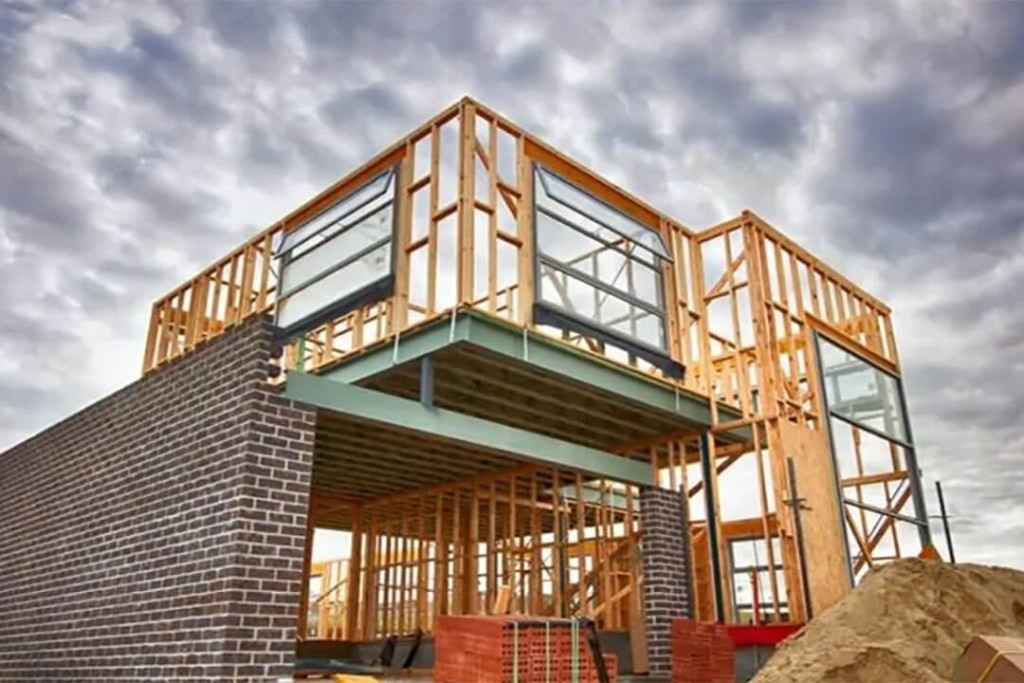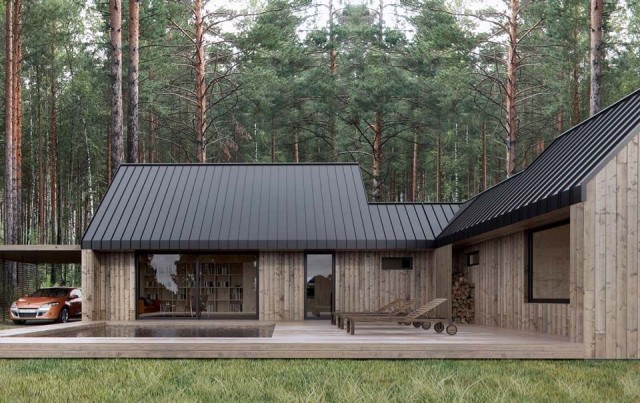Read next
The latest news, updates and expert views for ambitious, high-achieving and purpose-driven homeowners and property entrepreneurs.


You’ve got planning permission. Congratulations!
Pour yourself a glass of bubbly. You've passed the first great landmark on the road to a completed project. We’re absolutely not going to underplay what a great moment this is.
However, what you shouldn’t do is assume that you can start building tomorrow. For one thing, there is building regulations approval to secure.
For another, the letter confirming your planning consent will have a sentence starting: ‘Subject to the following [number] conditions…’
So what are planning conditions, what does ‘discharging planning conditions’ mean and how can you avoid unnecessary problems?
In this article, we will show you how you can stop worrying about your planning conditions. We will take you step-by-step through the process of discharging all planning conditions relating to your planning permission.
You will find out the best ways to apply to discharge your planning conditions and start the construction phase of your project.

In the often bizarre world of planning jargon, ‘conditions’ is one of the simplest terms you will come across. It means what you probably think it means: these are things you have to either do, not do or stick to when using your planning permission.
The first one, the one everyone will have, will be the time limit, which is almost always three years.
For a lot of simple projects, there will only be one other condition – an instruction to do everything you said you were going to do in your planning application. That is at least simple, but you shouldn't ignore it - building something that doesn't match the drawings is in breach of planning conditions and in the worst-case scenario, the council could ask you to demolish what you build. If you do need to make changes, you should submit a Section 73 application (see below).
But your approval letter might also go on to list a number of other conditions. Some of them you have to act on before starting to build or during the build, some before you can use what’s being built, and others with longer-term consequences.
Your immediate focus will be on the ones you have to deal with before starting construction work. These are likely to be about the details of the project. For a small, domestic project these often include:
How many conditions you get can depend on how detailed your planning application was. For instance, if your application promised something like ‘materials in keeping with the local character’, you will get a condition about materials that will be the planning authority making sure that you and it are actually talking about the same thing.

If all that seems fairly sensible, you might be surprised to learn that there is political tension to do with planning conditions. Crudely speaking, central government suspects that local planning authorities sometimes use planning conditions as a way of seeming to say yes to development while actually making it very difficult for building works to ever start.
Take a look at the government’s guidance for the use of planning conditions in England and you will find it is full of instructions to planning authorities to try not to use conditions.
These are mostly aimed at conditions on major development rather than one-off new build houses or alterations to existing homes, but it’s worth bearing in mind should you decide to appeal against any of your conditions. More about that later.
According to the government guidelines, all conditions should be:

The first planning condition is usually the time limit. To learn about what you need to do to show that you have started work within the time limit, have a look here. But what do you need to do to ‘discharge’ – fulfil or complete – any other conditions?
The ones that matter immediately are those that have to be discharged before you start building. In planning language, these are ‘pre-commencement’ conditions.
In theory, the planning officers should have discussed the conditions they are thinking of imposing before the planning permission is even made, and got your agreement. In reality, this doesn’t normally happen for small projects.
The conditions you have to discharge before you start building are often the ones we have mentioned earlier – materials, paving, drainage, trees and parking, along with construction methods. What you have to do is fill in an ‘Application for approval of details reserved by condition’.
This will be available on the council’s website. It asks you to list which conditions you are seeking to discharge and asks you to give details of how you have done so. You can include all the conditions you want to discharge on one form – and there’s a good reason why you might want to do that…
Yes, you do – except for listed building conditions. But you pay that fee per application for approval, not per condition. This is why it’s better for you to be well-organised and submit all your details for pre-build conditions in one form.
The cost of discharge of planning conditions is £34 for a householder (eg, for an extension or loft conversion) or £116 for new builds and other larger projects.
Usually, the planning authority will be asking for details. If, for instance, in your application for planning permission you stated that you will be using traditional roof tiles, then the conditions will confirm that you have to stick to this.
In that case, on your application for approval of details, you should supply the specifics of which roof tiles you will be using. You might have to supply samples of the materials you are intending to use as evidence.
These are the discharge of planning conditions timescales: the planning authority is meant to give you a decision within eight weeks of receiving your application. And if they haven’t given you a decision within 12 weeks, then you get your fee back.
Not all planning conditions are about things you have to do before you start building. They can also be:
The government’s attempts to crack down on pre-commencement conditions means that an increasing number of conditions don’t have to be discharged until after the foundations have been laid.
This means that you can at least get started while finalising your decisions about things like window frames.
Sometimes the planning authority prefers to check that you have complied with a condition after construction has been completed. In this case, you are meant to put in your application for discharge and have it approved before starting to use what you have built. If you think about what that actually means, you can see how impractical it is.
For instance, with a kitchen extension, it would be almost impossible to keep living in your house and not use the new kitchen for eight weeks while the council gets around to agreeing to your discharge. So in the real world, many, if not most, ‘pre-occupation’ conditions are discharged while the building is already in use.
To give a simple example, this is from planning permission for a garage:
“the outbuilding hereby approved shall only be used for purposes ancillary to the residential use of the dwellinghouse … and shall not be occupied as any form of self contained residential accommodation without the prior benefit of planning permission.”
Sometimes, they can seem more specific and restrictive. For instance, if you’re putting a grass-covered living roof on top of your kitchen extension, you might well get a condition telling you that you can’t sit on this new green space. At which point, you might think, “It’s my property – can’t I sit where I like?”
But the point of planning conditions is – in the government’s words – to “enable development to proceed where it would otherwise have been necessary to refuse planning permission”.
And in this example, if you had proposed putting a terrace on top of the extension, it would have been rejected for depriving your neighbours of their right to privacy. So you are only getting planning permission because the roof is only going to be a roof – the condition is there to make sure you stay within the regulations.
This is one of the types of condition that the government is trying to discourage. There is normally a range of permitted development rights homeowners can use to make changes to their homes without needing planning permission.
In the past, planning authorities often removed these rights from new-build houses. This can sometimes still happen, but you might have a good chance of appealing against it.

We’ve put this together to give you a sense of some of the things you might see on your list of planning conditions, especially for medium-sized projects. This is just a sample, but if you read through you’ll have a better idea of the issues that matter to councils as well as the level of detail and expert involvement that can be needed to discharge conditions.

You’ve hired your builders and are getting near the time you’ve scheduled to get started on site. You are also sure you have complied with all the pre-commencement conditions, but you haven’t heard back from the council. In that case, you can serve a notice of “deemed discharge” of planning conditions on your local authority.
This means that you are officially informing them you have obeyed the conditions and are going to proceed as if you had had approval of your application for discharge.
You can only submit this notice six weeks or later after your application for approval of details reserved was received by the local authority, and you can't start construction for another 14 days or until the initial eight-week period is finished.
You can't use deemed discharge for all planning conditions. The exclusions include anything to do with flood risks, Environmental Impact Assessments, contaminated land, Sites of Special Scientific Interest and Section 106 agreements.
You can – this is known as a Section 73 application, because of the legislation it comes from (Town and Country Planning Act 1990). The disadvantage of a Section 73 application is that you are dealing with the same planning authority that imposed the conditions in the first place, so you will need a strong argument to make them change their minds.
But unlike with an appeal (see below), only the conditions will be considered, so you are not putting your planning permission at risk. They can add new conditions, but effectively you can choose which set of conditions – new or old – you comply with.
Do note that you can only use one of these applications to try to get a change in the conditions, not in your whole permission. For example, developers have tried to use S73 applications to increase the number of houses they can build on a site. That is not allowed under the regulations.
The fee for an S73 application is £234, regardless of how many conditions you are asking the local authority to vary or remove. The timescale, unfortunately, is the same as full planning permission – eight weeks for a small project, 13 for a bigger one.
Yes, but you have to do it within 12 weeks (if you are appealing as a householder) or six months of your original planning permission approval. Your appeal goes to the Planning Inspectorate, and you need to be able to argue that the condition or conditions are unfair, unreasonable or unlawful.
But the appeal process can take up to six months, and you can’t start building work during that time. And because the Planning Inspector will examine the whole of your original planning application, you can lose your planning permission altogether.
Failure to discharge planning conditions can be serious. If you start work without having discharged any pre-commencement conditions, it may make your planning permission invalid. That’s where the enforcement of planning conditions comes in.
If you start construction, the local authority can and sometimes will come to check if you have got planning permission and if you are fulfilling the conditions.
At best, you will have to apply for planning permission from the start all over again, with no guarantee it will be granted this time.
At worst, you can end up with action against you – a temporary stop notice, an enforcement notice, or, if you’re working on a listed building or a tree with a preservation order, even criminal charges. Failing to comply with an enforcement notice can also end up with you being prosecuted.
For larger, multiple-stage developments, failure to comply with conditions during the first stage can jeopardise your later stages.
We strongly advise that you take planning conditions seriously: if you think they make your project impossible, make a section 73 application, appeal the conditions or put in a new, modified planning application, but do not carry on without discharging them.
Even if you think it is unlikely that the council will check on a small project, undischarged conditions can cause real problems when you come to sell the property. Don’t risk it.
Urbanist Architecture is a London-based RIBA chartered architecture and planning practice with offices in Greenwich and Belgravia. With a dedicated focus in proven design and planning strategies, and expertise in residential extensions, conversions and new build homes, we help homeowners, landowners and developers achieve ROI-focused results.
If you would like us to guide you through the planning process from start to successful finish, please don’t hesitate to get in touch.

Nicole I. Guler BA(Hons), MSc, MRTPI is a chartered town planner and director who leads our planning team. She specialises in complex projects — from listed buildings to urban sites and Green Belt plots — and has a strong track record of success at planning appeals.
We look forward to learning how we can help you. Simply fill in the form below and someone on our team will respond to you at the earliest opportunity.
The latest news, updates and expert views for ambitious, high-achieving and purpose-driven homeowners and property entrepreneurs.
The latest news, updates and expert views for ambitious, high-achieving and purpose-driven homeowners and property entrepreneurs.










We specialise in crafting creative design and planning strategies to unlock the hidden potential of developments, secure planning permission and deliver imaginative projects on tricky sites
Write us a message